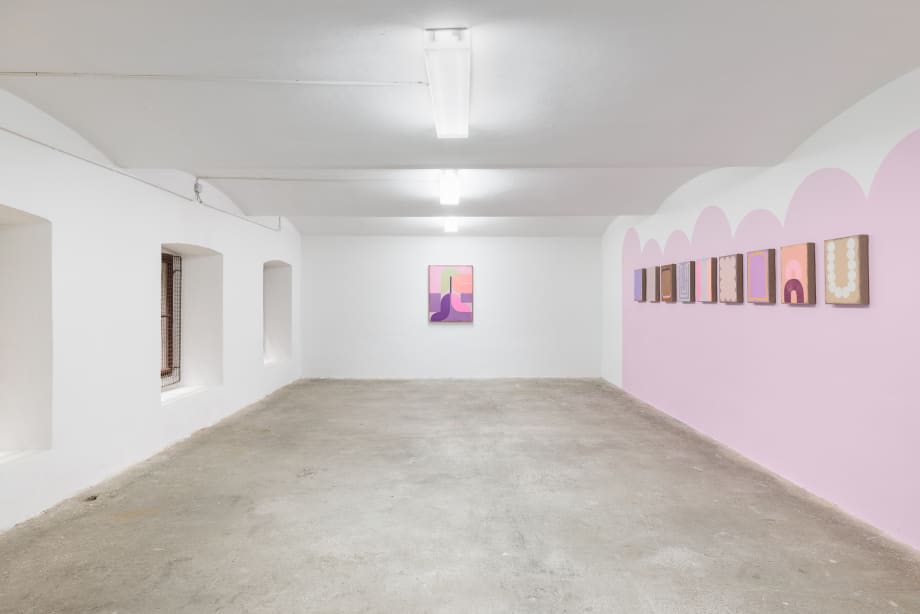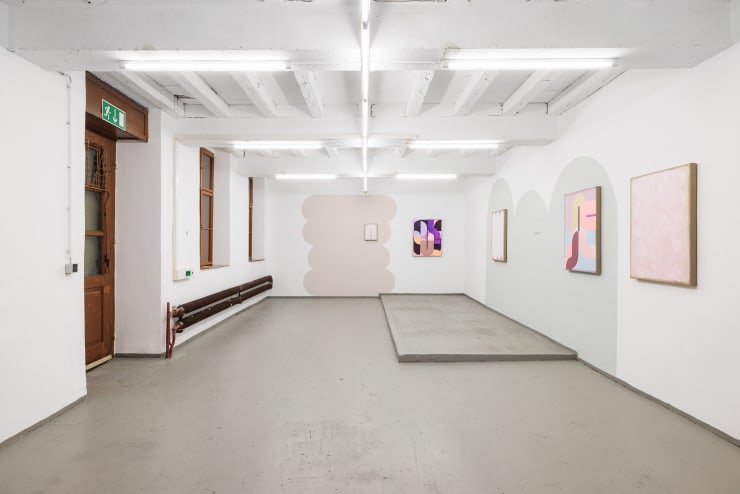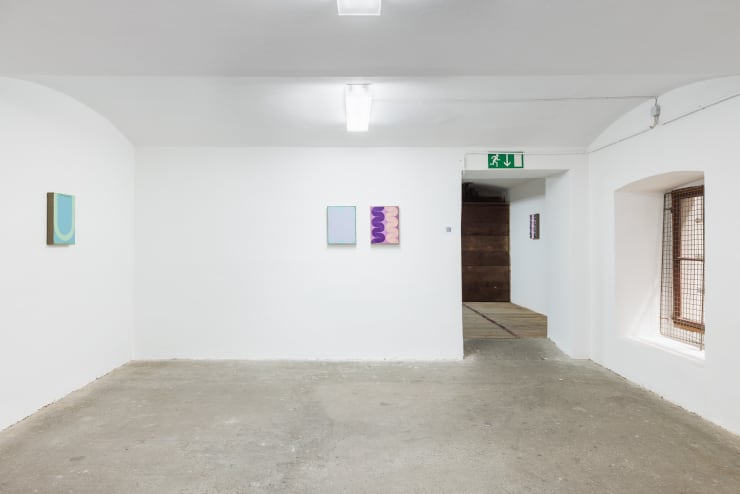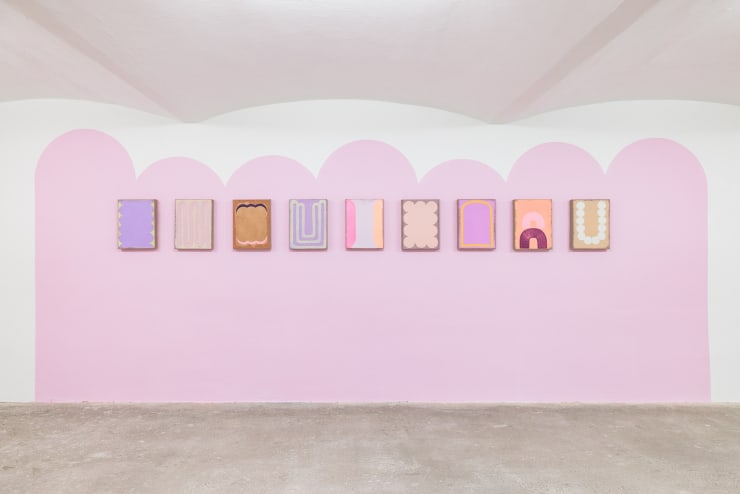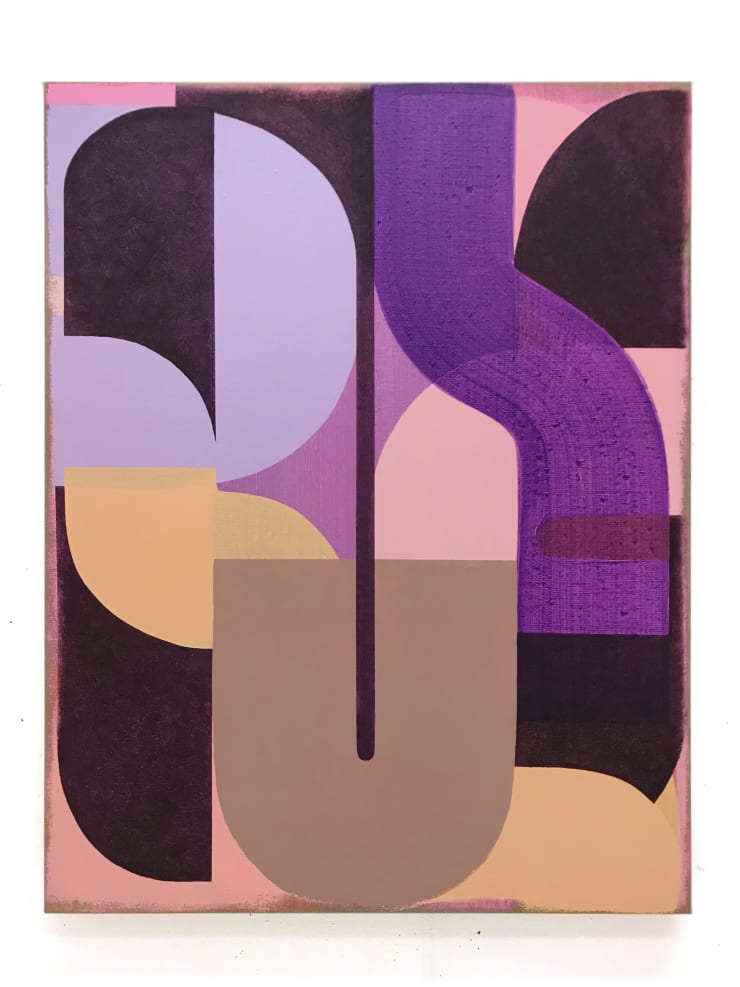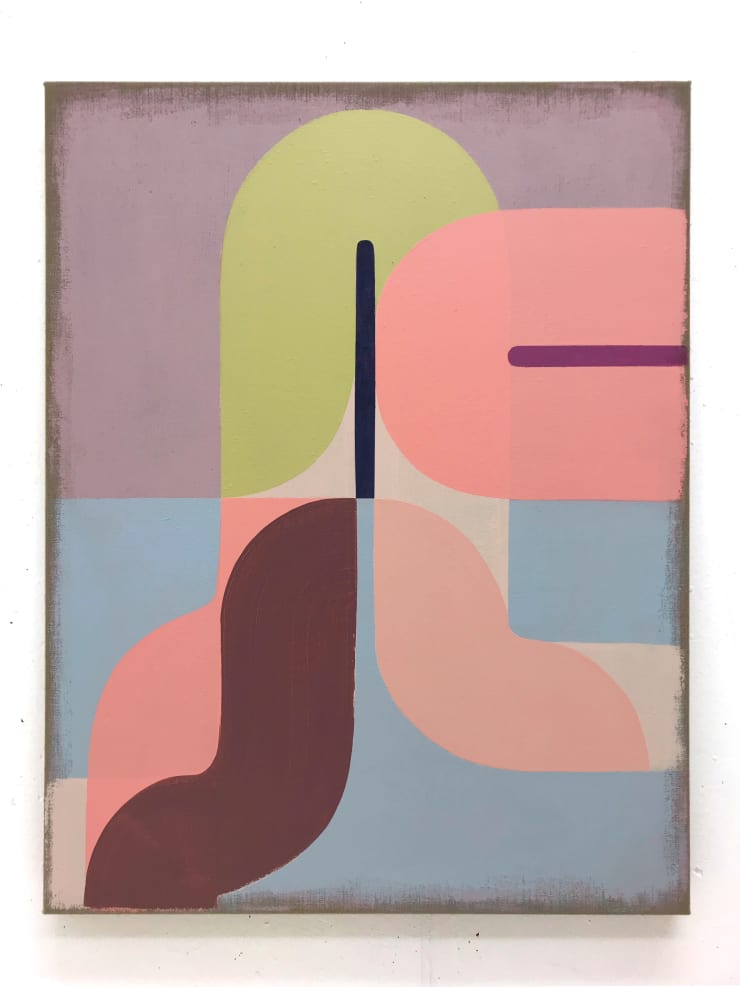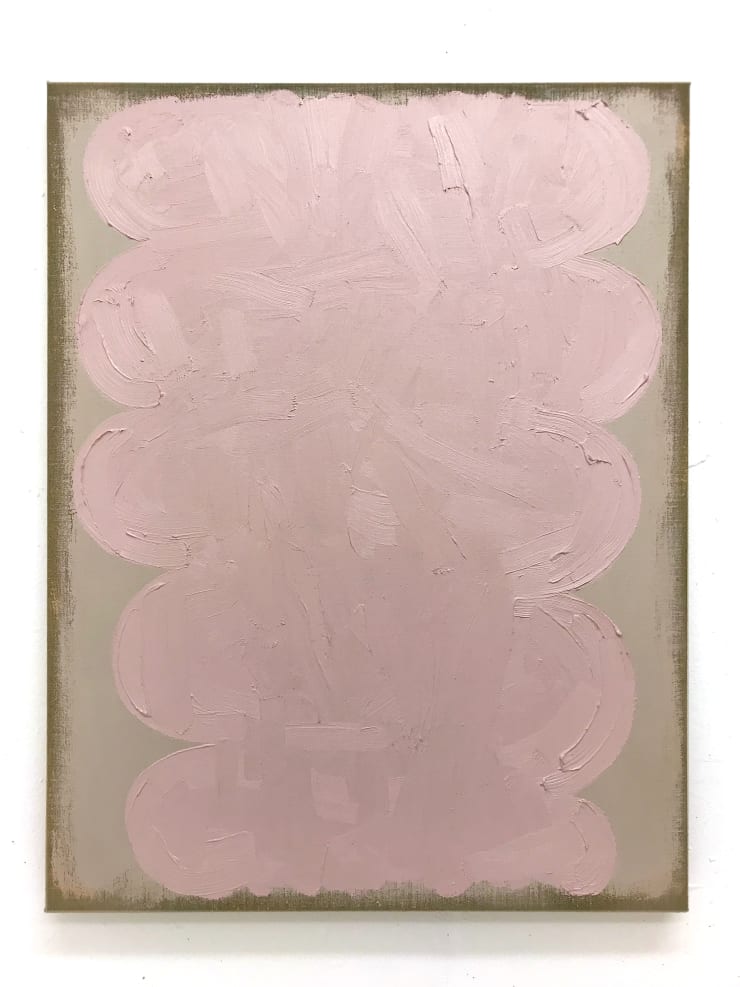Julia Brennacher: Spaces of Resonance II
In Spaces of Resonance II, Julia Brennacher’s painting unfolds as a spatial and sensory experience: the exhibition becomes a composition of image, color, and architecture, in which the work not only reveals itself but transforms the space itself into a painting. The title refers to a central principle of Brennacher’s work: resonance—as a formal, chromatic, and atmospheric interaction between the individual pieces, the wall paintings, and the space they inhabit.
The exhibition in the Schaulager of Galerie Suppan—formerly a printing workshop—picks up on the site's history as a place of material production, without illustrating it. Instead, Brennacher responds with painterly means to the specific spatial conditions. The wall is no longer understood as a neutral surface for projection but becomes both a support and agent of the painting: temporary wall paintings structure the architecture, echo shapes and colors of the canvases, and extend the painting into the space. A fluid correspondence arises between pictorial surface and spatial volume—between the interior of the image and the exterior of its presentation.
This dialogical approach reveals a fundamental concern of Brennacher’s work: painting is not understood merely as an autonomous object but as a relational structure. The geometric-abstract forms—segments of circles, curves, arcs—act like visual vocabulary, repeating, transforming, overlapping in space. Their reduced formal language points both to system and intuition: many of the forms are drawn freehand, showing traces of the painting process, small irregularities that lend a tactile, almost physical presence to the apparent rigor of the composition.
Color, too, possesses its own materiality in Brennacher’s work. Oil and acrylic paints meet in subtle layers, creating tensions between opacity and transparency, pastel and neon, texture and smoothness. Color is treated not merely as a compositional tool but as a sensuous-physical event—a body that enters into relation with other bodies.
The relationship between the individual works—particularly the small-format series—is just as crucial as their relationship to the space: in their serial hanging, these works unfold as an ensemble. The rhythm of their arrangement follows no strict order, allowing room for dissonance, translation, and resonance. The exhibition thus reads like a text made of visual signs, its structure reminiscent of language, music, or choreography: individual elements—images, colors, forms—enter into resonance, forming sequences, transitions, and contrasts.
In the SUPPAN Schaulager, this painterly cosmos is short-circuited with the industrial traces of the former print shop. The exhibition thus not only refers to the history of the site but also to a broader critique of the White Cube: the space is not neutralized but activated—not emptied, but charged—with color, form, memory, and movement. Spaces of Resonance II is therefore also an inquiry into the relationship between painting and space, between image and context, between material and perception—and at the same time, an invitation to move through these in-between spaces and experience them sensually. (Translated into English)
Original Text (German): Lena Ganahl
